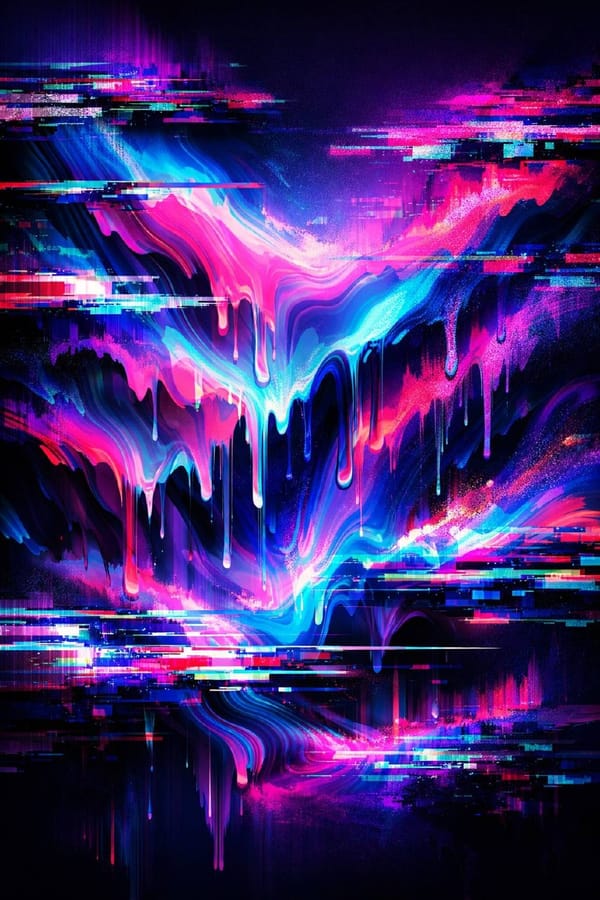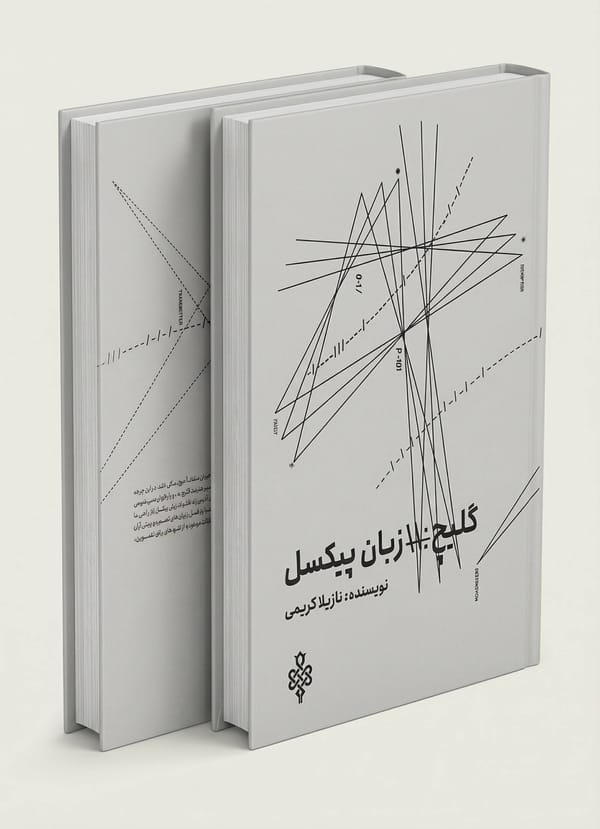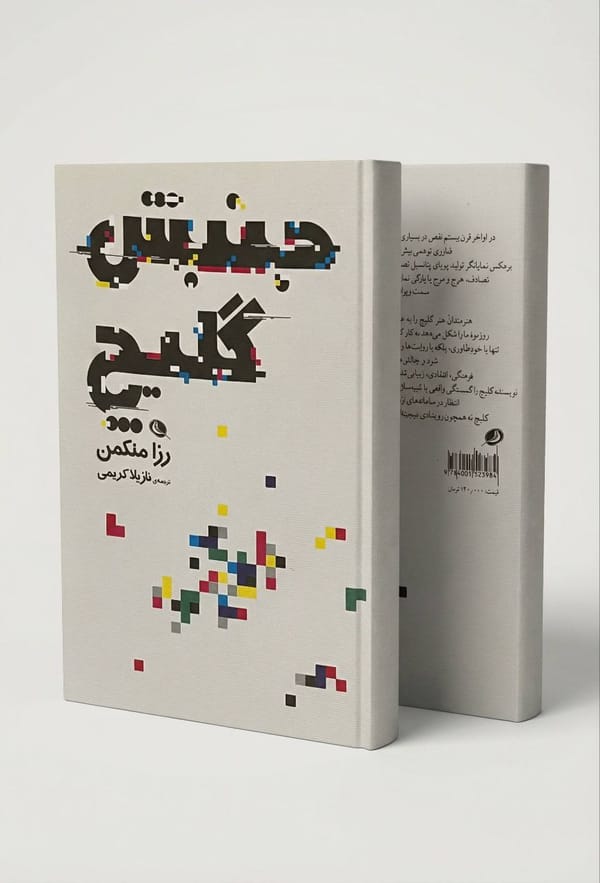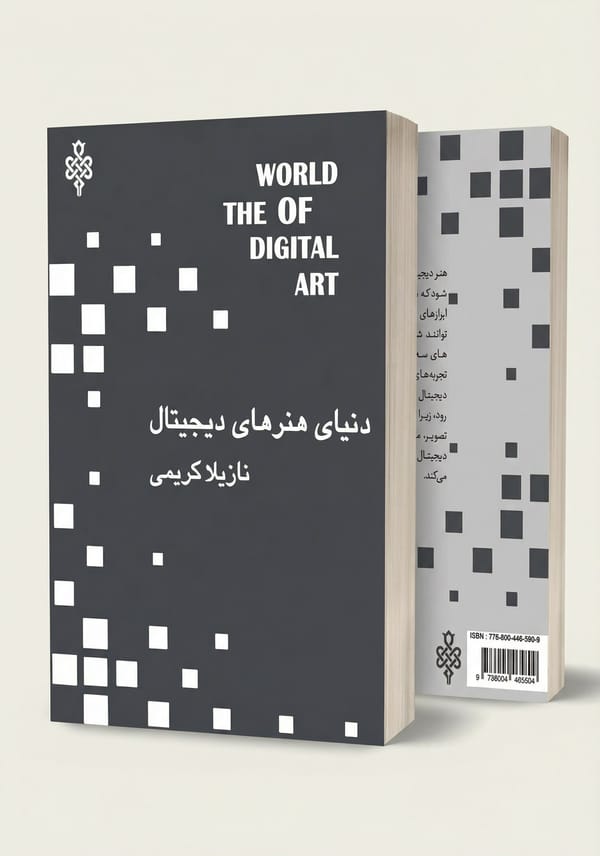Interview with Nazila Karimi: Exploring "Glitch; The Language of Pixel"
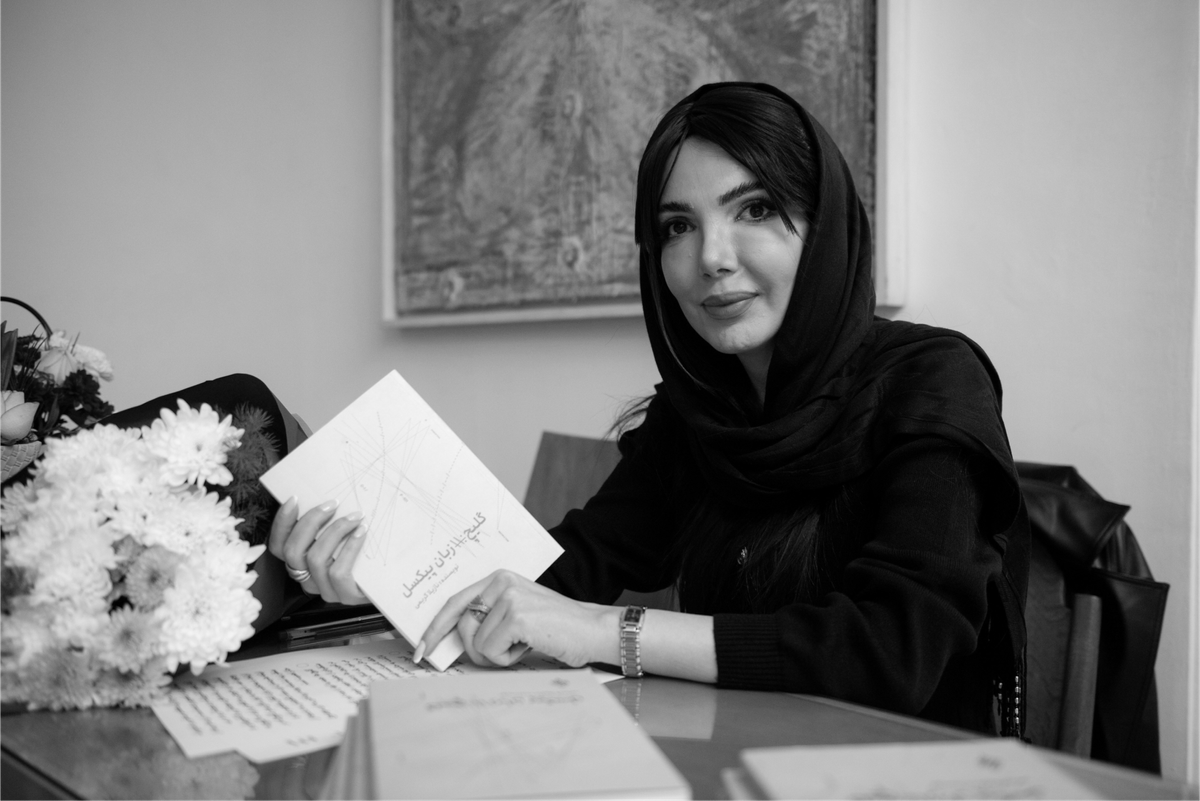
Introduction
Dive into our in-depth conversation with Nazila Karimi, the author of *"Glitch; The Language of Pixel."* Discover her journey into glitch art, the challenges of introducing this digital genre in Iran, and her insights on the impact of glitch aesthetics on contemporary art and creativity.
Lead
Nazila Karimi, born in 1363 (1984) in Hamedan, holds a Master's degree in Art Research from Islamic Azad University, Tehran Central Branch. She is also a researcher and digital arts artist. Karimi is the author of a book on glitch art titled "Glitch; The Language of Pixel" in Iran, which examines Iranian familiarity with this genre of digital arts. This book was published by Jomhouri in 1403 (2024). Karimi has also translated three books in the field of digital arts. She first translated "Glitch Movement" by Rosa Menkman, which is the first manifesto of glitch art in the world, into Persian. Her second translation is Rosa Menkman's "Beyond Resolution." Her third translation is Shay Moradi's "The Aesthetics of Glitch." As a video art and new media artist, she has participated in several domestic and international exhibitions, including the first Glitch Video Art Exhibition in Iran at Bavan Gallery (1399/2019). Subsequently, she participated in the "Pixel Aesthetics" exhibition with the video art piece "Epilepsy" at the Kandovan Building of the Pejman Foundation. In 1400 (2021), her photography works were exhibited in two exhibitions, "Noshon Motion" in London and "Modus" in London. She then presented her photography collection at Art Fair Rome in Italy to curator Luca Kerchi. On the occasion of the publication of the book "Glitch; The Language of Pixel," we had an interview with its author and creator.
1. When and how did you first become interested in glitch art? What is the reason for your so much attention and focus on it?
Answer:
Glitch first appeared in my life in 1398 (2019), when for my Master's thesis topic, through my studies and research in the field of multimedia art, I became acquainted with a novel genre of digital arts, namely glitch art. After 20 years since its theory was presented in Iran, it was still unknown and emerging. During this time, I faced a lack of Persian books and resources in this field. Given the high potential that glitch art has for dissemination in the digital space and its ability to connect with the audience, similar to other digital arts, for conveying concepts directly and on web-based platforms, and considering that in the past ten years, in countries seeking to establish infrastructure in digital arts and their new genres, there has been a growing trend in exhibiting works and producing scientific and educational content, addressing this topic is of great importance.
2. Please introduce glitch art in more detail. What is this art and how did it enter our country?
Answer:
"Glitch" is a common term in computer and network terminology, meaning a slip, error, disorder, flaw, or "minor electrical fault." The subject of glitch is approached from two main perspectives:
2.1. Glitch as an Aesthetic Aspect in Electronic Art
An aesthetic that consciously uses "errors" and "noise" in the creation of an artwork and enhances it.
2.2. Glitch as an Element in the Creative Process
Where unexpected interactions between hardware, software, and individuals play a significant role in producing the work. Here, glitch is the driving force in human-machine interaction, while the results oscillate in a continuous state of change, which may involve adjustment or fundamental transformation.
Glitch art is a method of using digital or analog errors for aesthetic purposes, which is done by corrupting digital data or physically manipulating electronic devices.
For the first time in 1397 (2018), the introduction and holding of an exhibition in the genre of glitch art was carried out by Platform 101 Artistic Institution in Iran. This institution announced a public and private call for digital artists to produce works in the field of glitch video art and aimed to establish the first glitch art exhibition in Iran. Following this call, out of 120 artists, after one year, 15 artists with 18 glitch videos participated in the first group glitch art exhibition named "Glitch; The Language of Pixel."
3. What resources did you utilize in authoring the book "Glitch; The Language of Pixel"? Did your translations of previous books on glitch art help you in compiling this book?
Answer:
Given the lack of resources and books in the field of glitch art in Iran, translating the books of Ms. Rosa Menkman, who is among the professors and theorists of glitch art and has presented a bibliography in this area, and also Mr. Shay Moradi, who has written a book on the aesthetics of glitch and has addressed the role of this component in significant aspects of aesthetics, these translations helped me to author the current book.
4. How many chapters does this book have, and what topics and aspects of glitch art does the reader become familiar with?
Answer:
The current book comprises 15 chapters, each of which contains various subchapters. In this book, topics such as the introduction of glitch, aesthetics, the history of the term glitch, Rosa Menkman's manifesto, types of glitch, glitch music, glitch content, visual characteristics of glitch, methods of creating glitch, the genre of glitch art, glitch art design, glitch design techniques, the aesthetics of glitch art, the history of glitch art in Iran and the introduction of Iranian glitch artists, the history of the glitch movement in Iran, and the introduction and examination of works by Iranian glitch artists are addressed. The reader becomes acquainted with these key topics of glitch art.
5. Considering that you have so far translated and authored many articles in the field of glitch art, focusing on introducing and how to use it, what impact and applications do you think this art has on the lives and knowledge of humanity today?
Answer:
What is examined in this book are the components of contemporary art, a look at contemporary artistic movements, and the examination of the role of digital technology in this artistic field and the degree of attention given to technology in related movements. This research also, while investigating the historical causes for the emergence of video art and new art, addresses the characteristics of new art so that artists can pay attention to the features necessary for creating artworks in this field. The excessive focus of modern art on technique and artistic concepts seriously detaches it from addressing human and social issues, whereas new art, with all its modern facilities and tools, is determined to always pay attention to important global topics and present these topics in new forms of artistic expression.
Impact of Glitch Art on Digital Works and Artistic Creativity
-
Function and Feedback of Glitch Art on Digital Works:
Glitch, which was initially treated as a nuisance, after its passage and continuous presence in the digital image scene, became an inseparable element of the digital world. All types of glitch, each apart from the specific reaction they create in the image, can attach a specific meaning to the glitched image.
For example, destruction and deterioration in the image's pixels can convey the meaning of decay to the destroyed image. In other words, extending pixel deterioration can connect with an element that has lost meaning in the societal space. A destroyed image of an eliminated political figure can refer to the decay of their thoughts in the political and civil society. -
The Impact of Glitch Art Presence on Artistic Creativity:
The fact that glitch is interpreted as an anti-aesthetic element allows the process of creating artworks to follow its own path, away from the usual rules of artwork creation. The allowance for adventure that various glitches in the digital image provide can open up the artist's hand in creation and, both visually and semantically, take us and the artists to distant realms. -
Glitch Art in Iranian Video Test Works and Our Culture Leads to the Creation of a New Expression:
The genre of glitch art, by being present in each culture, implements its function and conveys its meaning. However, glitch should not be defined within political and earthly boundaries. Defining glitch art and its genre is an international genre. But every artist, anywhere in the world, utilizes its ability to assign meaning in their own way, allowing them to apply this capability to images from their own native culture.
For example, an artist in America applies this to an image of their country's president, and an Iranian artist does the same with an image of their own president. The image structures and visual literacy present in each society are evident in their final artistic output.
6. Essentially, for whom is this book useful and applicable?
Answer:
The current book is useful for the younger generation and those interested in digital arts, computer tools and programs, programmers, graphic designers, and even formal arts. Typically, in Iran, works presented under the title of digital art had outputs that were predetermined by a program, meaning that the digital process was merely considered a tool, or the artist created their ideas in collaboration with individuals or teams responsible for the programming or coding aspects.
Undoubtedly, the new and pioneering options of Iranian digital art, especially in new genres like glitch, by leveraging the facilities of the media era and digital communication tools alongside the advancement of today's technologies, have significantly reduced the gap between their past and the global forefront. They are becoming one of the centers of creative production, transitioning from the era of modernity's authority to the era of postmodern plurality, and in this transformation and shift, many social trends are nurtured and displayed within them.
7. Is your book's audience a specific segment of society, or can its content also be attractive and understandable to the general audience and those unfamiliar with glitch art?
Answer:
Essentially, the majority of thinkers and enthusiasts of digital arts, programmers, and individuals who work with computer programs and software can create artistic works. However, the general public can also welcome these works and enjoy viewing them.
8. Do you think writing and authoring such a book can convey the necessary education and concepts to the audience, or does it more have the aspect of general information and theoretical acquaintance with a new scientific and artistic phenomenon?
Answer:
In my opinion, this book encompasses both mentioned aspects, and it depends on the reader's perspective.
9. Do you think, besides publishing the book, what other actions can be taken to familiarize as many audiences and enthusiasts as possible with glitch art?
Answer:
Given the existing infrastructure in the country's artistic and scientific space, it is recommended to allocate special places for digital and multimedia arts. Additionally, due to the lack of written resources in this field, it is better for the relevant specialists to publish more resources in this discipline and organize international exhibitions.
10. Are there any untold aspects about glitch art that would encourage you to revisit this subject in the future and engage in translation, research, and book writing about it?
Answer:
Certainly, there are more topics in this area that can be addressed in the future.
Given the existing infrastructure in the country's artistic and scientific space, it is recommended to allocate special places for digital and multimedia arts. Additionally, due to the lack of written resources in this field, it is better for the relevant specialists to publish more resources in this discipline and organize international exhibitions.
11. Is glitch art only new and unknown in our country, or is it fundamentally a new art globally? How is glitch art used in foreign countries?
Answer:
Glitch art is an emerging and less-known art both globally and nationally. In foreign countries, it has been more introduced through organizing exhibitions, festivals, lectures, and showcasing works by artists in this art form. They use it in animation shorts, film trailers, music videos, etc.
12. Finally, if there is any unsaid word, please share it.
Answer:
Finally, I am very grateful for conducting this interview and for the opportunity given to me to provide explanations about the book "Glitch; The Language of Pixel." I hope that more books and articles will be published in Iran, and exhibitions and festivals in the field of glitch art and video glitch art will be organized.

